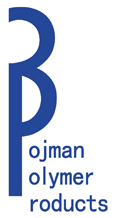3P QuickCure Clay
3P QuickCure Clay is the only "cure-on demand" clay for artists. With its unlimited working time, 3P QuickCure Clay allows you all the time you need to prepare your sculpture. Only when you are ready, do you start the curing processing by heating with a heat gun. The curing process is fast because the reaction proceeds by "frontal polymerization"...the chemical reaction actually spreads out so you don't need to heat the complete sample. 3P QCC is contains acrylates and a peroxide so you need to wear gloves when handling it.
3PQCC is a proprietary mixture of acrylates, peroxides and inorganic fillers.
Demonstration
Artist Shelby Prindaville demonstrates 3P QCC.
Uses
You can use 3P QuickCure Clay to make small sculptures or to apply over an armature for large sculptures. Take all the time you want to prepare your sculpture because it won't harden until you are ready.
You can also use it to make casts or molds.
Advantages
- 3P QCC is "cure-on demand" so no oven or kiln is required.
- The medium does not sag during curing.
- The cured material is stronger than air-dried clay.
- You can prepare objects in steps because it bonds to cured material.
- The cured materials adheres to wood, paper and plastics.
- 3P QCC an be formed around styrofoam, which then collapses during curing.
- Can be colored with acrylic or oil paint.
- If painted with acrylic paint before curing, the paint is dry after curing.
- Can be sanded, drilled and machined.
How to Use 3P QCC
- Form the medium in the shape you desire.
- You can use vegetable oil to prevent the 3P QCC from sticking but use very little or else bubbling of the
- medium can occur during heating.
- Heat the medium with a heat gun until the reaction starts.
- Allow to cool.
Safety Warnings
- Don’t eat it!
- Wear gloves while handling because it can irritate your skin.
- Heat with a heat gun to initiate curing. Do this in a well-ventilated area.
- The material will be extremely hot (>200 ˚C) so be careful until it cools down.
How to obtain 3P QCC?
Contact Dr. John A. Pojman by clicking here
The 3P Story
Frontal polymerization was invented in the 1970s in Chernogolovka, Russia and then "rediscovered" by Professor John A. Pojman, then at The University of Southern Mississippi, in 1991. Here is a complete bibliography of all work published on the topic. Frontal polymerization is "a localized reaction that propagates through a monomer by the coupling of thermal transport and the Arrhenius kinetics of an exothermic polymerization." In simple terms, you heat a mixture of chemicals that react and give off heat. The heat spreads and causes neighboring regions to start reacting and give off more heat. The process continues as the reaction spreads out through all the material.
Pojman had been researching frontal polymerization since 1991 and begun to work on repair aplications for one pot, cure-on demand medium. In the April 2011, Pojman gave a lecture in the Department of Chemistry at Portland State University and Colleen Williams, suggested his materials could be useful for artists. This started the work that led to 3P QuickCure Clay and 3P ArtMedium. He then worked with Ms. Shelby Prindaville, an MFA student at Louisiana State University, in developing art applications for 3P QuickCure Clay.
